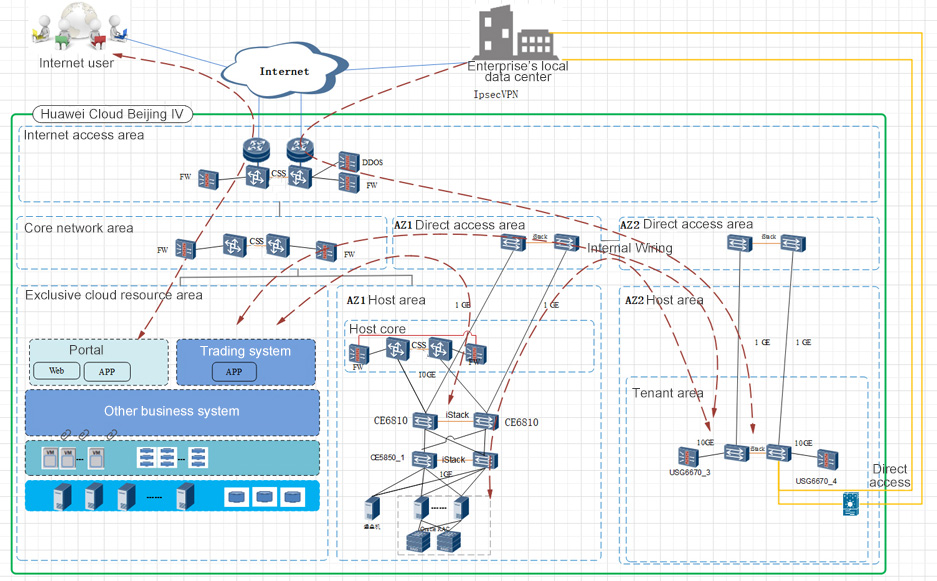-
Business Scenario
Restricted by Huawei Cloud Beijing hosting area I, the storage resource capacity used by Oracle RAC cannot be expanded. Besides, the exclusive cloud adopts XEN virtualization architecture, which also needs to be upgraded to KVM architecture to facilitate the continuous expansion and evolution of future services. Therefore, the business will be relocated to Beijing Fourth Ring Road from October to December 2021.
-
Business Challenge
Cloud migration has been recognized as one of the biggest difficulties in the cloud technology by the industry, because it is a very complex process, requiring business stability, elasticity of business demand, and data security. While migrating from one cloud to another, the customer should consider compatibility between two cloud. The migration of this project is quite difficult and challenging: Migration path: Beijing exclusive cloud I -Beijing exclusive cloud IV.
• Virtualization platform: XEN platform -- KVM platform
• Operating System (OP) involved: Windows Server 2008, CentOS 6.5, Centos 7.9, CentOS 7.6, major middleware involved: WebLogic, Tomcat, Kafka, Redis, RabbitMQ, ActiveMQ
• Database involved: Oracle, MySQL
• Big Data involved: Hadoop
• Data volume: Approx. 20T
• Number of virtual machines: 140+ -
Solution
To complete the cloud migration, Digital China and Huawei Cloud jointly formed a project team including architects, database experts, network experts and migration experts. Both parties made concerted effort to formulate a thorough cloud migration process and program as per the IT system of the enterprise.
Both teams have accumulated years of competence in the field of cloud migration, helping the company migrate 70+ business systems through agile operation mode and tacit cooperation. The overall architecture is as follows:
-
 Continuous expansion and evolutionUpgrade the customer’s XEN virtualization architecture to KVM architecture to facilitate the continuous expansion and evolution of future services.
Continuous expansion and evolutionUpgrade the customer’s XEN virtualization architecture to KVM architecture to facilitate the continuous expansion and evolution of future services. -
 Planning, construction and O&MClear up the doubts about multi-platform migration, the subsequent overall planning, construction and O & M of public cloud infrastructure.
Planning, construction and O&MClear up the doubts about multi-platform migration, the subsequent overall planning, construction and O & M of public cloud infrastructure. -
 Reduced investment/O&M costAllocate resources on demand to reduce IT investment and O & M costs.
Reduced investment/O&M costAllocate resources on demand to reduce IT investment and O & M costs. -
 Lowered risk costMaintain efficient O&M to lower risk cost of IT failures.
Lowered risk costMaintain efficient O&M to lower risk cost of IT failures.


 Jing Gong Wang An Bei No. 11010802037792
Jing Gong Wang An Bei No. 11010802037792